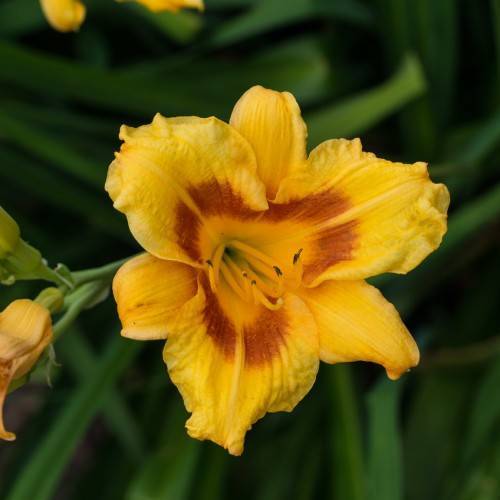
daylily
Hemerocallis 'Black Eyed Stella'
Cycle:
Herbaceous Perennial
Watering:
Average
Hardiness Zone:
4 - 9
Flowers:
Flowers
Sun:
Full sun,part shade
Leaf:
Yes
Growth Rate:
Low
Maintenance:
Low
Drought Tolerant:
Yes
Salt Tolerant:
Yes
Care Level:
Medium
watering
Daylilies should be watered about once a week; however, the exact amount and frequency will depend on the climate and the location of the plant. In general, you should water daylilies deeply enough to moisten the entire root zone. During the summer months, you should water more frequently in hotter, drier climates to prevent the soil from drying out. In the winter months, the need for water decreases. In colder climates, be sure to water more slowly and infrequently during the winter months in order to prevent frost damage to the roots. You can also use a layer of mulch around the plant to retain moisture and keep the root area cool.
sunlight
Daylilies need full to partial sunlight to thrive. They enjoy at least 6 hours of direct sunlight each day. For optimal growth and flowering, they should receive direct sun in the morning and diffuse sunlight or partial shade in the afternoon. If direct sunlight is not available, they can tolerate dappled sun or filtered strong sunlight for at least 4 hours daily. Daylilies can also thrive in deep shade but will flower less.
pruning
It is best to prune daylilies (Hemerocallis 'Black Eyed Stella') in late spring or early summer after the flowers have faded. Cut all the bloom stalks close to the base of the plant but leave the foliage intact. To encourage better flowering the following season, remove any dead, yellowing or damaged leaves. If necessary, lightly trim away long and sprawling foliage. Pruning will help to keep the plants neat looking, stimulate new growth, and produce more flowers the following year.
